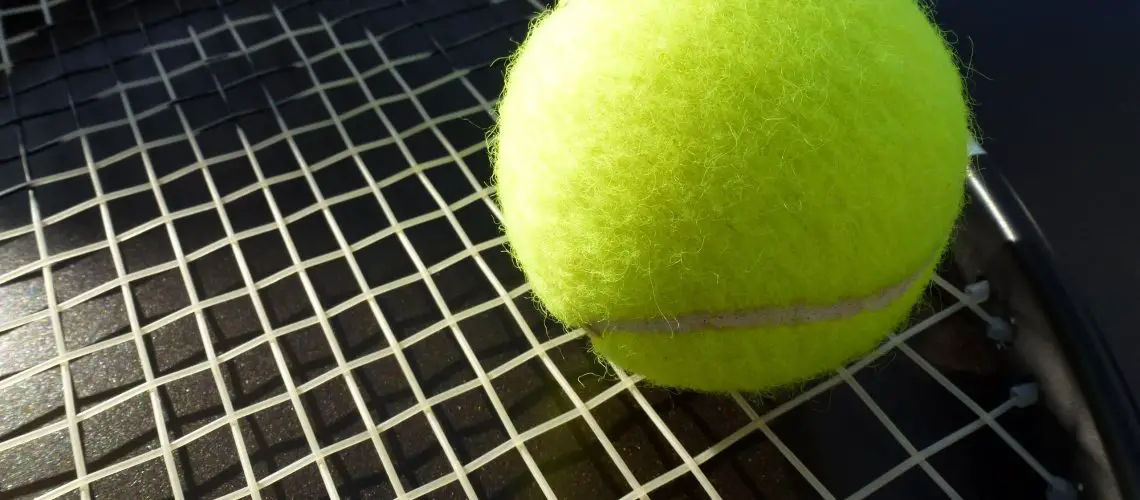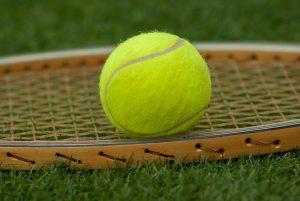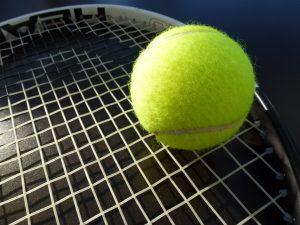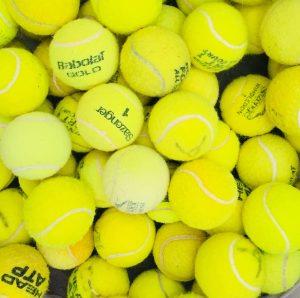We may earn money or products from the companies mentioned in this post.
Introduction to Tennis Seeds

When it comes to tennis tournaments, the term “seeds” holds significant importance In this article, we will delve into the meaning of seeds in tennis and explore their historical origins Additionally, we will discuss the crucial role that seeds play in ensuring fairness and balancing skilled players across tournament draws
Explanation of the Term “Seed” in Tennis
In tennis, a seed refers to a player who is assigned a specific ranking or position before a tournament begins These rankings are based on various factors such as past performance, current form, and overall skill level The purpose of seeding is to provide an advantage to top-ranked players while maintaining fair competition throughout the tournament
The term “seed” originated from the practice of planting seeds for future growth Just like how plants with potential are carefully selected and nurtured, tennis seeds represent players who have proven themselves worthy of recognition and favorable placement in the draw
Importance of Seeds in Tennis Tournaments
Seeds play a vital role in ensuring fairness and maintaining competitive balance in tennis tournaments Let’s explore two key reasons why seeds are highly significant:
-
Ensuring Fairness in Competition:
By assigning seeds based on player rankings, organizers aim to create an equitable playing field This helps prevent early clashes between top-ranked players and ensures that lower-ranked participants have a fair chance to compete against opponents at their own level -
Balancing Skilled Players Across the Draw:
Seeds serve as a strategic tool for distributing skilled players strategically across tournament brackets or draws This approach prevents one side from becoming excessively stacked with strong competitors while leaving another side relatively weaker Balancing the distribution of talent increases excitement and unpredictability in the matches, making the tournament more engaging for both players and spectators
Overall, seeds in tennis are essential for maintaining fairness, competitiveness, and excitement throughout tournaments By recognizing and nurturing talented players through seeding, organizers can ensure that the best athletes rise to the top while keeping the playing field level for all participants
How Tennis Players are Seeded

When it comes to the world of tennis, every player dreams of being seeded in a tournament But have you ever wondered how these seeds are determined? It’s not just a random draw – there is actually a meticulous process involved that takes into account various factors Let’s take a closer look at how tennis players are seeded
Factors considered for seeding process
In order to determine the seedings, several key factors are taken into consideration:
-
ATP/WTA rankings:
The official rankings provided by the Association of Tennis Professionals (ATP) and Women’s Tennis Association (WTA) play a crucial role in the seeding process These rankings reflect a player’s performance and consistency over time, taking into account points earned from past tournaments - a) Points earned from past performances and consistency over time: The players who have consistently performed well in previous tournaments and accumulated more ranking points will be given higher seeds This ensures that those who have proven themselves on the court receive appropriate recognition
- b) Recent tournament results: The performance in recent tournaments also carries weight in determining seedings Players who have been successful in their most recent events will be rewarded with better seeds, as it indicates they are currently playing at a high level
-
Tournament-specific factors:
Each tournament may consider certain specific factors while deciding on the seedings - a) Surface preferences: Different players excel on different court surfaces such as grass, clay, or hard courts Therefore, if a tournament is played on grass, for example, players with strong grass-court records may be given higher seeds
- b) Head-to-head records against other competitors: Previous head-to-head match results can also be taken into account If a player has consistently performed well against certain opponents, it may influence their seeding position
The role of tournament organizers and committees in determining seeds
While the ATP and WTA rankings provide a baseline for the seedings, the final decision rests with the tournament organizers and committees They have the authority to adjust or modify the seedings based on their own criteria and considerations
The tournament organizers understand that seedings play a significant role in creating balanced and exciting matches throughout the event They aim to ensure that top-ranked players are distributed strategically across different sections of the draw, minimizing early clashes between strong contenders
By carefully considering various factors such as player rankings, recent performances, surface preferences, and head-to-head records, tennis tournaments can create a fair and competitive playing field for all participants
The Impact of Seedings on Tournament Dynamics and Strategy

The Effect of Seedings on Early-Round Matches
When it comes to tournaments, seedings play a crucial role in determining the matchups in the early rounds Top-seeded players often find themselves facing lower-ranked opponents in these initial stages On paper, these matches may seem like a walk in the park for the favorites, but as we’ve seen time and again, anything can happen in sports
1 Top-Seeded Players vs Lower-Ranked Opponents:
For top-seeded players, early-round matches against lower-ranked opponents can be a double-edged sword On one hand, they have the advantage of their higher ranking and superior skill set On the other hand, they need to be cautious not to underestimate their opponents or become complacent
2 Potential for Upsets and Cinderella Stories:
This is where upsets come into play – those thrilling moments when an underdog rises to the occasion and triumphs over a higher-ranked opponent These shocking outcomes create memorable Cinderella stories that captivate audiences worldwide The unpredictability that seedings bring adds an element of excitement to tournaments
How Seedings Influence Player Strategy During the Tournament
Seedings not only impact the matchups but also influence how players approach their games strategically throughout the tournament
1 Preparation Against Known Opponents:
Knowing who their potential opponents will be based on seedings allows players to prepare meticulously beforehand They study their rivals’ playing styles, strengths, weaknesses, and patterns to gain an edge during matches This preparation helps them devise game plans tailored specifically to counter their known adversaries
2 Adapting Game Plan Based on Opponent’s Playing Style:
However, there are instances when players face unexpected opponents due to upsets or surprise performances in earlier rounds In such cases, seedings can still play a role by influencing how players adapt their game plans on the fly They need to quickly analyze their opponent’s playing style and adjust their strategies accordingly to exploit weaknesses and maximize their chances of success
In conclusion, seedings have a significant impact on tournament dynamics and player strategy Early-round matches between top-seeded players and lower-ranked opponents bring excitement, with the potential for upsets and Cinderella stories Meanwhile, seedings help players prepare against known opponents and adapt their game plans based on the playing style of unexpected challengers The interplay between seedings and strategy adds an extra layer of complexity to tournaments, making them all the more captivating for fans worldwide
Conclusion: Understanding Seedings in Tennis Contextually

In conclusion, understanding the role and significance of seedings in tennis competitions is crucial for fans and players alike Seedings help create balanced draws, ensuring that top-ranked players are spread across the tournament brackets This not only adds excitement to the matches but also promotes fair competition
The Importance and Impact of Seedings on Tennis Competitions
Seedings play a vital role in determining the path players must navigate to reach the later stages of a tournament They provide a structure that ensures higher-ranked players face lower-ranked opponents in earlier rounds, gradually increasing the level of competition as the tournament progresses This system contributes to the overall competitiveness and fairness of tennis events
Additionally, seedings have an impact on match scheduling and court assignments Higher-seeded players often receive preferential treatment, which can include prime time slots or access to show courts Such privileges not only recognize their accomplishments but also enhance their visibility and draw more attention from fans
The Limitations of Seedings: No Guarantee for Success or Failure
While seed numbers give us a general indication of a player’s ranking and performance, they don’t guarantee success or failure on any given day Upsets are common in tennis, where underdogs rise to defeat higher-ranked opponents through sheer determination or exceptional performance These surprises remind us that anything can happen on the court, regardless of seeding positions
Moreover, injuries and fluctuations in form can significantly impact a player’s performance, making it challenging to accurately predict outcomes based solely on seeds The dynamic nature of professional tennis demands adaptability from both competitors and spectators
Appreciating Depth and Talent Beyond Seed Numbers
It is essential for fans to look beyond seed numbers when evaluating the depth and talent within professional tennis While top-seeded players often dominate headlines, there is a wealth of skill and potential throughout the rankings Matches between lower-ranked players can be just as thrilling and provide unexpected moments of brilliance
By appreciating the diversity in playing styles, personalities, and backgrounds across the tennis spectrum, fans can derive greater enjoyment from every match they watch It’s a chance to witness emerging stars making their mark or experienced veterans defying expectations
In conclusion, seedings serve as a framework for organizing tennis competitions and ensuring fair matchups along the way However, they should not be seen as definitive indicators of success or failure Instead, let’s embrace the unpredictability of this beautiful sport and celebrate the talent that exists beyond mere numbers
Useful Links

How did the word ‘seed’ come to be used in sports?
Seeding Criteria
Tennis Seeding Meeting Procedures
Seeds – The Championships, Wimbledon
The Wimbledon seeding system: History, controversy and …
Definition, Examples, and Common Questions About The Bye
seed | Definition from the Tennis topic
What is Seed in Tennis and How does it Work
Men’s Tennis ATP Rankings 2023
What’s The Difference Between Being The No. 1 and No. 2 …
How did the word “seed” get into March Madness brackets?
Andy Murray | Overview
Tournaments
What is Seed in Tennis? Definition and Meaning
2022 U.S. Open Seed Reports
Number of Seeds For Draw – TennisLink | Help Center
SEED Tennis
How Seeding, a Term From Agriculture, Took Root In Tennis






